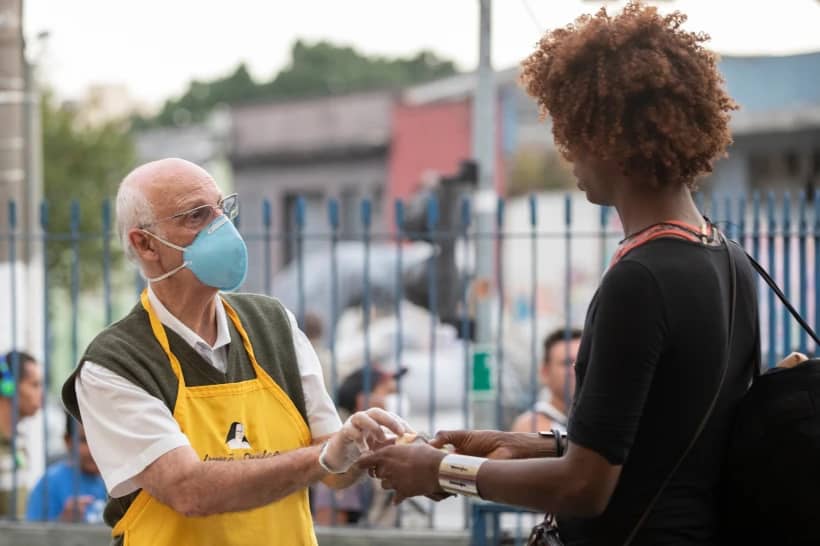YAOUNDÉ, Cameroon – Catholic Relief Services says it is ready to help deal with a plague outbreak in Madagascar, after the World Health Organization confirmed at least 33 people have died from the disease, and nearly 200 others have been infected.
Outbreaks of plague have devastated communities throughout recorded history, and in the 1300s the “Black Death” killed around 30 percent of Europe’s population. The same epidemic is believed to have killed over 10 percent of Africa’s population.
Caused by the Yersinia pestis bacterium, plague is usually spread by fleas, but since the advent of antibiotics is treatable.
However, it is still dangerous.
Joshua Poole, country representative of the CRS in Madagascar told Crux in an e-mail interview that plague is “deadly serious, if left untreated it most often results in death.”
Plague is endemic in Madagascar – a large island nation in the Indian Ocean, just over 300 miles off the coast of Africa – and outbreaks happen nearly every year.
This year, the plague has already spread to ten cities, including the capital, Antananarivo, and the coastal cities of Toamasina and Mahajanga.
“This is only just the start of the plague season,” Poole said.

Poole said that while the disease is usually transmitted from fleas to humans, this year has seen an increase in transmission from humans to humans.
“Rats or other small mammals are the initial host but when they die, the fleas seek out a host. If this is in proximity to humans, the plague can pass with a flea bite,” he explained.
“Pneumonic plague is even more dangerous since it is airborne and can pass from human to human. Poor sanitation and hygiene, and overflowing and untreated garbage heaps in urban areas contribute to the spread,” Poole said.
Madagascar has known similar plagues before, but contrary to past experiences, it is “affecting larger urban areas and ports, which increases the risk of person-to-person transmission,” WHO spokesman Tarik Jasarevic said.
Sixty of the reported cases were a result of the more common bubonic plague, including seven deaths, while more than 70 cases — including 17 deaths – are suspected to be pneumonic plague, which is much deadlier.
Both bubonic and pneumonic plague can be cured using common antibiotics if delivered early. However – if left untreated – bubonic plague has a death rate of between 30 and 90 percent, while pneumonic plague is almost always fatal.
The WHO says the plague erupted in late August when a 31-year old man died after visiting the plague-prone area of Ankazobe, where the plague is established in the rodent and flea populations. The man then developed symptoms thought to be malaria.
Four days later, he boarded a public taxi to his home at the eastern port city of Toamasina, passing through the capital Antanarivo. He died before reaching home, after developing severe respiratory symptoms.
Poole said the Ministry of Health and other government officials are doing their best, with support from WHO.
He told Crux the government has suspended all large gatherings – including concerts, public ceremonies, and sporting events – and ordered the schools closed this week to facilitate spraying and cleaning the buildings.
“The Ministry has also sent mass SMS/text messages about the plague, the symptoms and what to do if you think you may have some or all of those symptoms. WHO flyers with explanations are also up at public places including airports and taxi stations,” Poole said.
He added one challenge could be the supply chain of masks and antibiotics, which tend to sell quickly at pharmacies and other medical facilities: In the rush to buy the protective masks, the population is further exposing itself to the risk of contamination, as they line up to purchase the items.
The Catholic Relief Services for now is helping to deliver the information originating from officials at the Ministry of Health and WHO to their staff, partners, and others with whom they are in contact, but Poole says the organization is not yet involved in direct interventions.
“If a gap exists and is identified by the Ministry of Health or other organizations, CRS has the capacity to support. One of the main affected areas (Toamasina) is an area CRS has interventions and could mobilize quickly if needed,” he told Crux.
Poole said while the short-term measures are critical to stemming the spread of the current plague, long term solutions should be envisaged to help keep the country safe over time.
“Over the longer term, efforts to clean up urban areas and encourage households, schools, and other community areas to clear brush or respect cleanliness standards will be key. This needs to happen not just from the national level but from the regional and local government structures,” he told Crux.
WHO has delivered nearly 1.2 million doses of antibiotics and released $1.5 million dollars in emergency funds to fight plague in Madagascar, but says it needs $5.5 million more to effectively deal with the outbreak.
Meanwhile, officials in Madagascar say they will launch a campaign to remove trash in the capital and distribute rat traps to the population.
















